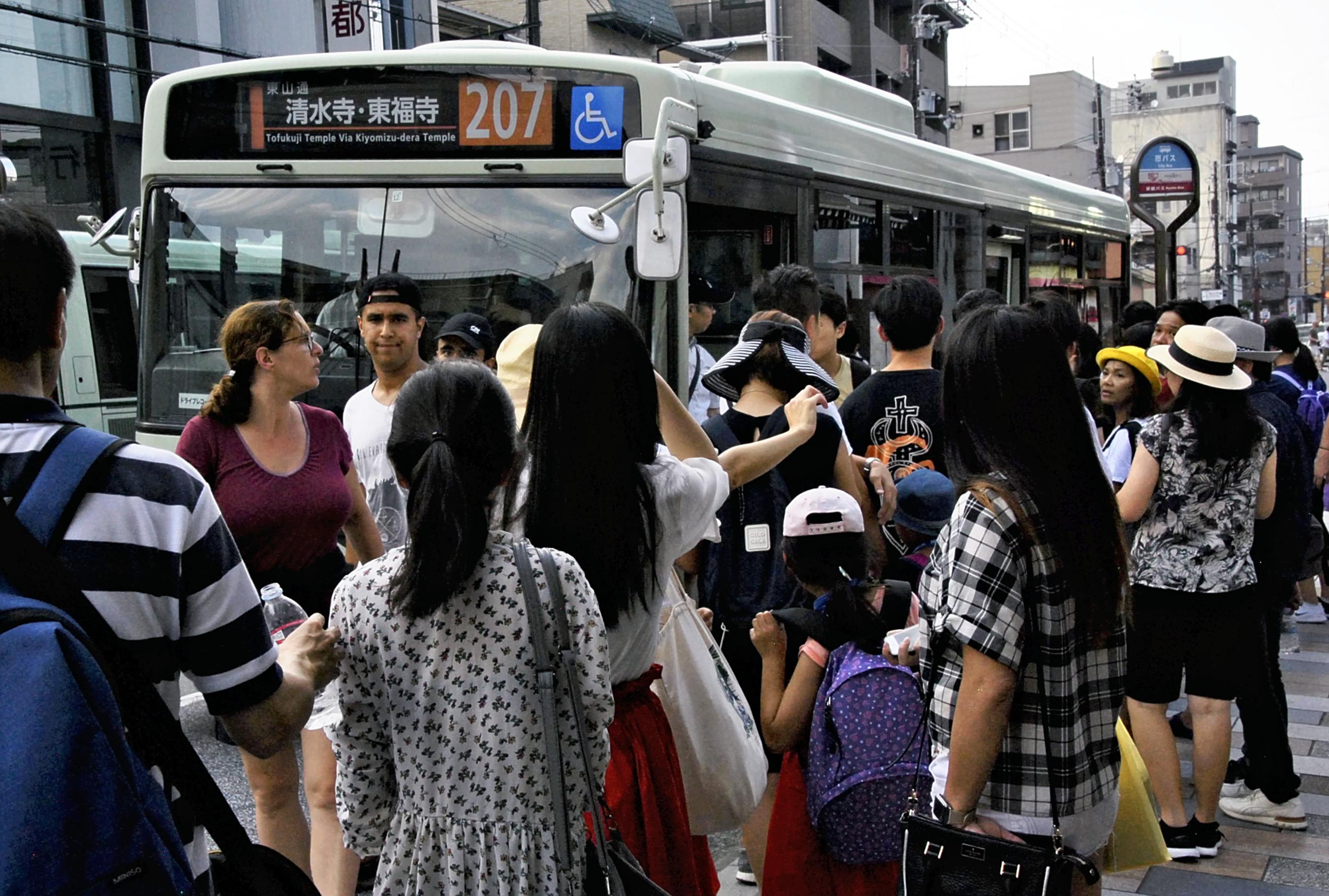Japan deals with ‘tourist pollution’ from surges in visitors
KYOTO — “Another bus bound for JR Kyoto Station will arrive shortly,” announced a bus driver at a bus stop near Kiyomizu-dera Temple, one of Kyoto’s most popular tourist sites. The doors closed as the bus drove off packed with passengers.
It was the afternoon of Aug. 5, which saw a high temperature of 39.5 C in the city. The throng of foreign visitors unable to board appeared somewhat resentful as the bus departed, stranding them in scorching heat. Such sights are increasingly common in Kyoto as more and more tourists visit Japan.
Some visitors had brought small portable fans after conducting research in advance. Even so, “Heat like this is really hard to bear,” complained a man in his 20s from Xian, China.
Local residents are likewise having more trouble immediately boarding buses.
“I’ve gotten used to it,” said wagashi sweets shop owner Kazuhisa Namikawa, 54, with a look of resignation.
Article continues after this advertisementSuch excessive growth in tourism has damaged the environment and disturbed residents’ everyday lives, such as by causing traffic congestion. This phenomenon, dubbed “tourism pollution,” has emerged as a worldwide problem, and can also lead to disappointment for visitors.
Article continues after this advertisementThis year, the resort island of Boracay in the Philippines was swamped by tourists, which caused a rapid acceleration in environmental degradation. The island was forced to deny entry to tourists for up to six months. At a press conference, Tourism Secretary Bernadette Romulo-Puyat stressed that she had learned that promotion of tourism should not compromise the health of the environment.
In response to such problems, efforts are under way to discourage visitors from converging during certain seasons and times of day. To combat overcrowding at Mt. Fuji — a top destination for foreign tourists —the Yamanashi and Shizuoka prefectural governments are urging visitors to avoid crowds, view the sunrise at mountain huts before heading for the peak, and climb on weekdays when congestion is less severe.
Central Japan Railway Co., which uses the catchphrase “Souda, Kyoto ikou” (Yes! Let’s go to Kyoto) in tourism campaigns, is now promoting maple trees that still have green leaves in early summer. Through such efforts, it hopes to promote tourism beyond the crowded peak tourist seasons when cherry blossoms and autumn foliage come into view.
The central government has likewise been spurred to take action. In June, the Japan Tourism Agency established an office to promote sustainable tourism, and is working to grasp the current situation and rapidly implement countermeasures.
Some entities are exploring new methods. In Kamakura, a popular destination for foreign tourists, traffic congestion has become a serious issue, primarily on weekends. To alleviate congestion, the Land, Infrastructure, Transport and Tourism Ministry, Kamakura city government and other bodies are considering the use of ETC 2.0, a next-generation automated toll-collection system, to charge vehicles entering the city center with a fee.
They will also conduct demonstration trials to ease congestion, such as studying the flow of people and vehicles using AI-assisted image analysis technology. However, public opinion may be difficult to unify. “The traffic jams on weekends are awful, so charging tourists’ cars is understandable,” said one Kamakura resident in his 60s.
However, a 66-year self-employed woman was more wary of the proposal, questioning, “Should we place the burden solely on tourists?”
“It’s time to consider placing limits on the number of people who enter as an anti-crowding measure,” said Toru Azuma, a professor at Rikkyo University’s College of Tourism. “To maintain our pride as a tourism nation, harmonious coexistence with local residents is extremely important.”

